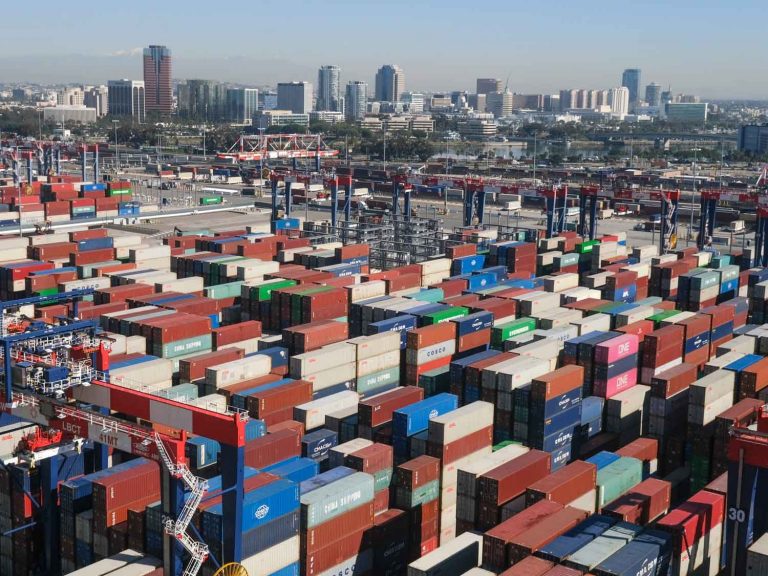
Date:
Tariff Front-loading Pushes US Imports from Record Highs to Year-End Declines
After setting an all-time monthly record for container imports in July, US retailers are bracing for a sharp reversal to close out 2025, with volumes projected to tumble nearly 20% year on year through the holiday season.
The National Retail Federation’s (NRF) latest Global Port Tracker shows that front-loading tied to tariff deadlines and labour fears has left supply chains overstocked heading into the final quarter. As a result, the NRF forecasts full-year imports will be down almost 6% on 2024.
September’s forecast suggest that inbound containerised cargo will be down 20% on last year, while October and November are predicted to be almost 20% below 2024 levels. November would mark the lowest monthly total since April 2023. December imports are also set to fall nearly 20% year over year.
This comes in stark contrast to July, when tariff-driven front-loading propelled US imports to 2.609 million TEUs. The highest monthly figure ever recorded. Ports such as Los Angeles and Houston reported double-digit growth compared with June, as shippers rushed to beat potential duty increases. Imports from Southeast Asia and the Indian subcontinent set new records, while China’s volumes rebounded 36% month on month, even if still down compared with 2024.
But analysts caution that the surge represented a distortion, not a sustainable trend. “Friends, allies and foes are all being hit by distortions in trade flows as importers try to second-guess tariff levels by pulling forward imports before the tariffs take effect,” warned one. “This will certainly lead to a downturn in trade volumes by late September because inventories for the holiday season will already be in hand.”
The tariff backdrop remains fluid. Washington and Beijing recently extended their trade truce until November, keeping tariffs at 30% on Chinese goods entering the US and 10% on American exports to China. That temporary pause avoided the escalation to triple-digit duties threatened earlier in the year, but left shippers in limbo.
Jonathan Gold, NRF’s vice president for supply chain and customs policy, said the figures underline how tariffs are reshaping supply chains. “Tariffs are beginning to drive up consumer prices, and fewer imports will eventually mean fewer goods on store shelves,” he noted.
With consumer demand uncertain and trade policy still in flux, retailers are preparing for a far quieter peak season than the record-breaking summer surge suggested.
From record highs to steep year-end declines, many supply chains are overstocked and exposed to policy uncertainty.
In this volatile environment, shippers need more than capacity, they need agility and control.
Metro’s dedicated sea freight team and expanding US footprint, helps businesses navigate these swings with confidence. From proactive capacity management and efficient routing to supply chain visibility and inventory optimisation, we ensure your cargo keeps moving smoothly across the Pacific, whatever the market conditions.
EMAIL Andy Smith, Managing Director, to discuss how Metro can safeguard your transpacific supply chain.
